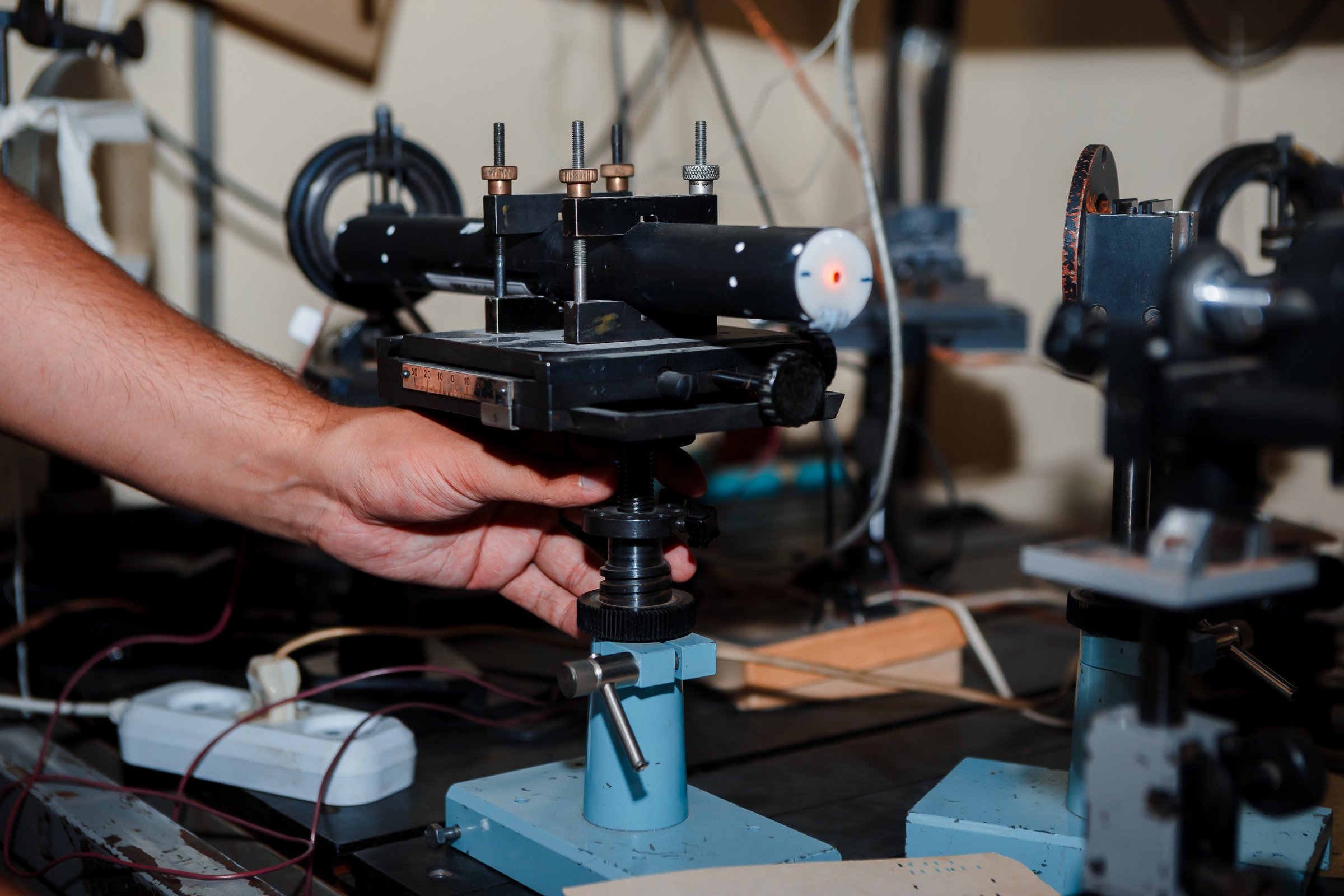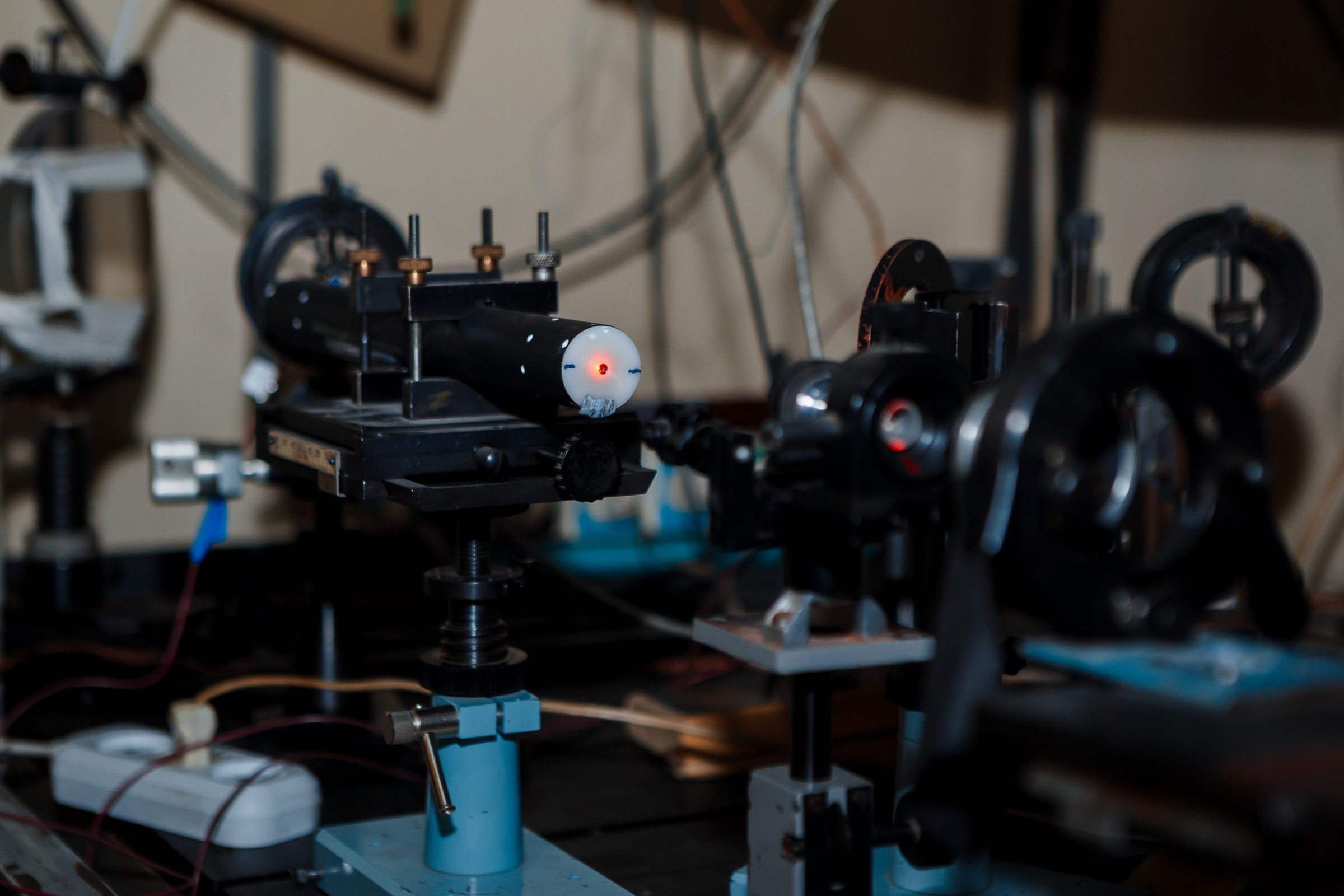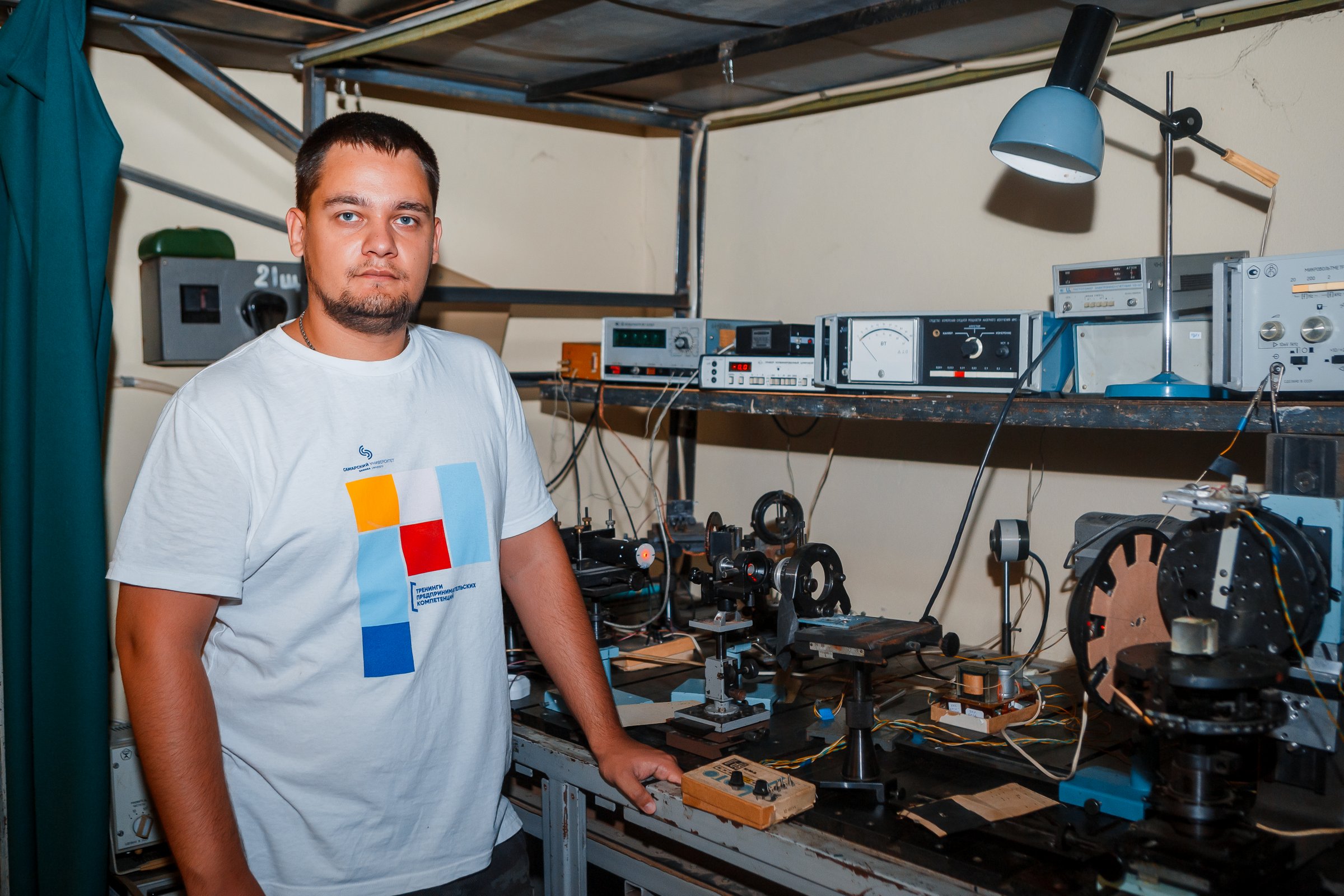“When refueling aircraft at airports, carefully monitoring water droplets in the fuel is required. Some quantity of water can get into kerosene directly from the surrounding atmosphere, as well as the condensate from the walls of the fuel tank can get into the fuel. During the flight, when the temperature outside is below zero, ice crystals can form in kerosene from water droplets, which causes ice “clogs” in the fuel supply system. This is fraught with engine failures and can result in the airplane crash”, said Andrey Ponomarev, the project author, a student of the Natural Science Institute of Samara University.
The device under development will be installed on aircraft tankers, both mobile and stationary, and, by the principle of its operation, will resemble the laser alarm system known to everyone from many movies, when the network of laser beams is created around a protected valuable object, for example, in the museum. As soon as the robber “touches” the laser beam, the alarm system gets activated. The Samara control system will transilluminate with laser the fuel injected into the aircraft inside the fuel line, in search of water inclusions. If there is a droplet of water in the area covered by the sensor, the laser beam will scatter on it in a certain way, and the alarm will get activated.
“At airports, in the process of refueling, the water content in the fuel is constantly monitored, and in a variety of ways. The optical control method is specified by high speed and high accuracy, it can be used in continuous operation, but, unfortunately, domestic sensors of this type have not yet produced in Russia, and foreign optical sensors are very expensive – about 20 thousand euros. In case of its mass production, our system will cost much cheaper, moreover all its components will be domestic”, Andrei Ponomarev stressed.
According to him, the diode laser of a certain wavelength will be used as the emitter in the system. Through the transmitting optics, the laser beam inside the pipeline will monitor the fuel flow, hitting the special reflective surface, like a mirror. If there are droplets of water in the kerosene, the beam will disperse, intensity of the signal falling on the receiving photodiode will change. By the level of the electrical signal, the system will determine concentration of water in the fuel.
According to the design specifications, the system being developed will have high sensitivity: the sensor will be able to automatically detect water in real time at the concentration of one mass fraction per million, which is comparable to the requirements for maximum permissible parameters in aviation (one mass fraction per million in this case will mean about 1 milliliter of water, which is about one fifth of a teaspoon, per 1 metric ton of kerosene). The response time of the device will be several fractions of a second, that is, if the water concentration rate is exceeded, it will be possible to quickly stop the fuel supply.
The project is expected to be implemented within two years. Currently, the laboratory experimental unit has been assembled, it is used for comprehensive studies, according to the results of which the working model of the sensor will be developed. At the final stage, the development is planned to be patented.
For reference
The Competition “UMNIK-Photonics” is held to support young scientists’ projects in the field of photonics, radiophotonics, optoelectronics and related fields in the interests of organizations of the consortium of the Competence Centre of NTI “Photonics”. The Competition is aimed at stimulating young scientists and specialists to establish small innovative enterprises necessary for commercialization of the results of these scientific developments. Students, postgraduates, young scientists, innovators, entrepreneurs and employees of high-tech companies aged 18 to 30 years can take part in the Competition “UMNIK-Photonics”.
Photo: Olesya Orina
 RU
RU  EN
EN  CN
CN  ES
ES 



